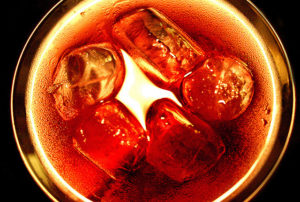Playlist
Show Playlist
Hide Playlist
Formation of Alkyl Halides – Alcohols
-
Slides 05 Chemistry Advanced Le Gresley.pdf
-
Download Lecture Overview
00:00 So, let’s have a look at the formation of alkyl halides from alcohols. 00:07 If we take our ideal ROH, which is our alcohol and we react it in the presence of a hydro-iodic or a hydro-halide acid, we can form a haloalkane. However, contrary to what you might imagine, it tends to work best when you have an iodide as the attacking nucleophile. This is nucleophilic substitution. 00:34 The mechanisms for this are both SN2 and SN1 depending on the substrate. And let’s talk a little bit more about that. 00:43 Substitution mechanism 1. 00:45 In a SN1, it is necessary to have a good leaving group and the conjugate base of a strong acid. 00:51 And OH- is the base of a very weak acid, which means it’s not a particularly good leaving group. 00:57 If we look, for example, at the following, the reaction of a nucleophile with our alcohol doesn’t actually yield a good outcome. The reason for this is that OH- is a particularly poor leaving group and that’s something that you’ll find throughout when you’re looking at synthetic chemistry that whenever a reaction step involves loss of OH-, it’s usually something that is not going to be thermodynamically favourable. 01:23 So, in this particular scenario, the substitution directly of the carbon which bears the OH group can’t take place in the presence of a nucleophile. And that reaction does not happen. 01:36 It’s necessary, therefore, in the case of our OH group, to modify it slightly in order to make it a better leaving group. And in this case, when we use acid, represented here as H+, which forms there an oxonium ion, as shown, with the positive charge on the oxygen, what we have done there is essentially create a good leaving group in the form of water. 02:03 And so, under certain conditions, for example, in the presence of hydro-iodic acid, it is possible to carry out a direct SN2 reaction by leaving or allowing to leave the water group and having the iodide ion attack the carbon. This results in the formation of our haloalkane, shown there as RX, and the production of water. 02:26 H2O is the conjugate base of the strong acid H3O+ and is, therefore, a good leaving group. 02:35 Let’s have a look at some other conditions here because in an ideal world, you don’t always want to make the halo-iodide. And this is where a number of other reactions can take place to give you the desired haloalkane. 02:49 In the case of an alcohol, you can react it with thionyl chloride in the presence of pyridine which gives rise to the appropriate chloroalkane. This reaction is particularly easy to carry out and is also relatively clean producing, as it does, sulphur dioxide and hydrochloric acid. 03:10 Another way of generating a haloalkane from an alcohol is to react it with phosphorus tribromide shown there as PBr3 or phosphorus triiodide. 03:20 Phosphorus tribromide is usually prepared in situ by the addition of bromine to red phosphorus and alcohol with warming and, in both cases, results in the production of the bromo- or iodo-alkane and the production, in this case, of phosphoric acid. 03:38 Now, let’s have a quick look at elimination reactions.
About the Lecture
The lecture Formation of Alkyl Halides – Alcohols by Adam Le Gresley, PhD is from the course Organic Chemistry.
Included Quiz Questions
Which of the following will NOT convert 1-butanol into 1-chlorobutane?
- CHCl3
- PCl3
- HCl
- CCl4/PPh3
- SOCl2
Why does the nucleophilic substitution type 1 (SN1) of alcohols not happen directly in the presence of nucleophiles?
- The loss of OH- ion is not favored thermodynamically.
- OH- is very stable ion species.
- OH- is a base of a very strong acid.
- OH- reacts with halogen molecules.
- OH- reacts with terminal carbon of hydrocarbon chain.
For the reaction: C3H7OH + HI → C3H7I + H2O, which of the following statements is NOT true?
- OH- anion is very stable.
- The loss of OH- ion is favored thermodynamically via formation of oxonium ion.
- H2O is a conjugate base of strong acid H3O+.
- In the presence of HI, the water acts as a good leaving group.
- Propanol and hydroiodic acid participate in nucleophilic substitution.
What is the outcome of the reaction between C4H9OH and SOCl2 in the presence of pyridine?
- C4H9Cl + SO2 +HCl
- C4H8Cl2 + SO2 + HCl
- C4H7Cl3 + SO2 + HCl
- C2H5-CH(Cl)-CH2OH + SO2 + HCl
- C2H5-CCl2-CH2OH + SO2 + HCl
Customer reviews
5,0 of 5 stars
| 5 Stars |
|
5 |
| 4 Stars |
|
0 |
| 3 Stars |
|
0 |
| 2 Stars |
|
0 |
| 1 Star |
|
0 |




